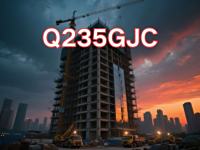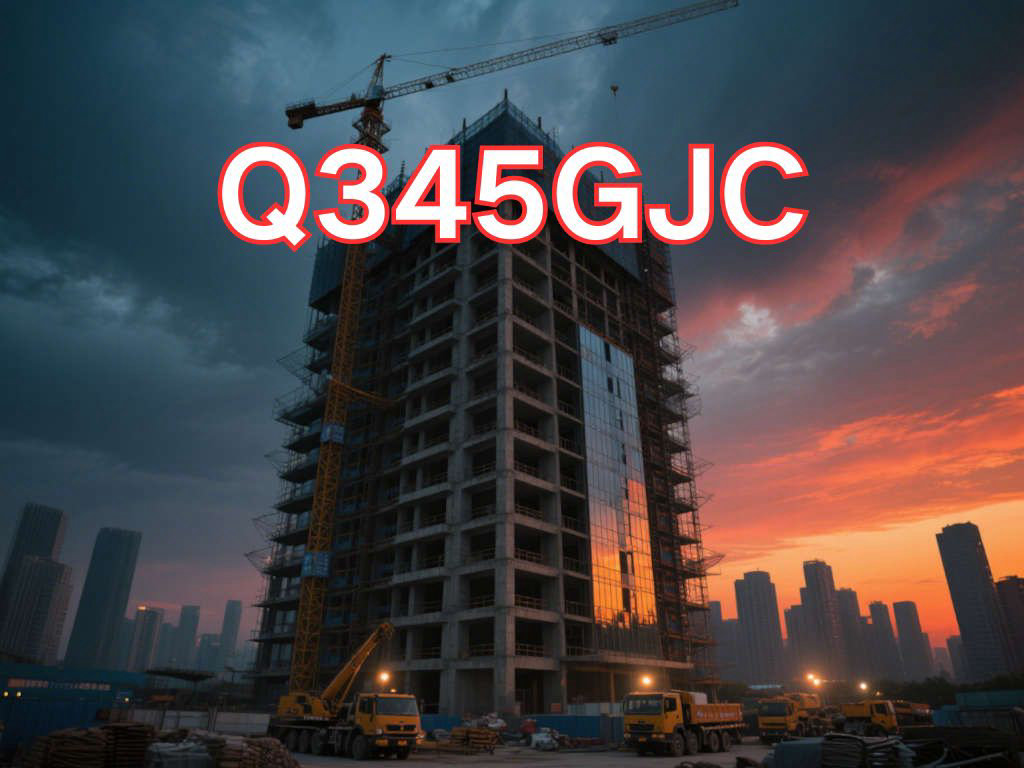

Q235GJC
Q235GJC is a steel plate specifically designed for building structures, with its designation following the Chinese national standard (GB) steel nomenclature system. It is widely used in high-rise and super high-rise buildings as well as critical structural applications, particularly in key load-bearing components such as beam-column connections, support frames, and shear walls. The "Q" stands for "Qu fu qiang du" (yield strength), indicating that the steel's primary mechanical property is defined by its yield strength. "235" denotes the specified minimum yield strength of 235 MPa at room temperature. "GJ" is the pinyin abbreviation for "Gong Jian Jie Gou" (building structure), clearly identifying its dedicated use in structural construction, distinguishing it from general-purpose structural steels. The suffix "C" indicates the quality grade, meaning the steel must meet a minimum average absorbed energy of 27 J in Charpy V-notch impact testing at 0°C, providing adequate low-temperature toughness suitable for building applications under normal climatic conditions.
The main characteristics of Q235GJC steel plate include moderate strength, excellent weldability, good ductility, and toughness, along with high dimensional stability and uniform microstructure. Its chemical composition is primarily based on carbon and manganese, with a low carbon equivalent (CEV), ensuring favorable weldability. It is compatible with various welding processes such as manual metal arc welding (SMAW), submerged arc welding (SAW), and gas metal arc welding (GMAW). The welded joints are crack-resistant, making it ideal for automated and semi-automated welding in large-scale building construction. Produced via hot-rolling or controlled rolling, the steel features fine grains and a uniform internal structure, resulting in stable mechanical properties. The tensile strength ranges from 310 to 430 MPa, with elongation (A) ≥23%, providing excellent plastic deformation capacity. This enables the material to effectively absorb energy under dynamic loads such as earthquakes, enhancing the seismic performance of building structures. Additionally, Q235GJC exhibits good cold-forming capability, allowing it to be fabricated into complex shapes to meet diverse architectural design requirements.
Q235GJC is widely used in beams, columns, trusses, and bracing systems in multi-story and high-rise residential buildings, stadiums, exhibition centers, and industrial workshops. Compared to ordinary carbon structural steels (e.g., Q235B), Q235GJC is specifically optimized for building applications, with stricter control over chemical composition and mechanical properties, particularly regarding carbon equivalent, yield-to-tensile ratio, and thickness-direction properties (Z-direction properties), ensuring safety and reliability under complex stress conditions.
The current standard for Q235GJC steel plate is the Chinese national standard GB/T 19879-2023 "Steel Plates for Building Structures", released and effective in 2023, replacing the previous GB/T 19879-2015 edition. This standard comprehensively specifies grades, chemical composition, mechanical properties, technological properties, impact toughness, Z-direction properties, and inspection rules, serving as a key technical reference for structural design and construction. Due to its balanced performance and cost-effectiveness, Q235GJC has become a widely adopted material in China's construction industry.

Ultrasonic Testing (UT)
A key non-destructive testing technique that uses high-frequency sound waves to detect internal flaws in steel plates. The probe emits sound waves, which reflect when encountering defects such as cracks or inclusions. The receiver captures the echoes, enabling precise determination of defect location and size. With high sensitivity, strong penetration, and fast inspection speed, UT effectively ensures internal quality, widely used in the production of heavy plates, pressure vessel plates, and other high-end products to guarantee safety and reliability.

Magnetic Particle Testing (MT)
A common surface inspection method that magnetizes the workpiece, causing leakage magnetic fields at surface or near-surface defects like cracks or inclusions, which attract magnetic particles to form visible indications. Simple to operate and highly sensitive, MT is suitable for rapid inspection of surface and near-surface flaws in ferromagnetic materials, widely used for online or offline inspection of plate edges, ends, and welds, ensuring product quality and safety.

Penetrant Testing (PT)
A non-destructive method for detecting surface-breaking flaws. A penetrant liquid is applied to the cleaned steel surface, allowing it to seep into defects such as cracks or pores. After removing excess penetrant, a developer is applied, causing the trapped penetrant to bleed out and form visible indications. Simple and cost-effective, PT is suitable for inspecting surface defects in various non-porous materials, commonly used for welds, castings, and complex components, effectively ensuring surface quality of steel plates.






